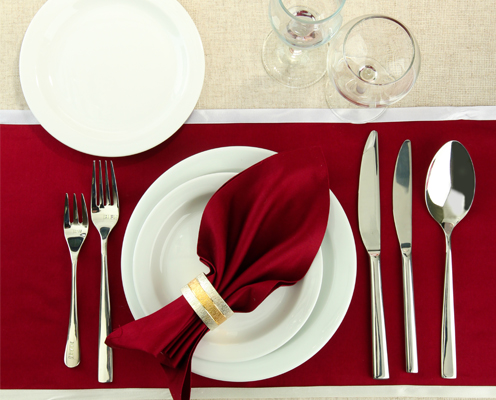A Table Setting Cheat Sheet

In some circles, proper table-setting etiquette is practised daily, but in others, it has all but disappeared. As an entertaining enthusiast, I do like to follow a few basic rules to save myself from social embarrassment when I have guests over for dinner, and to be honest, I get a kick out of jazzing up the dinner table, especially during the holidays. Here are a few of my favourite tips and tricks to remember when you’re preparing the table for your own festive feast later this month.
Basic Table Setting Rules
- According to Emily Post, a basic table setting can be achieved by remembering the acronym FORKS, and placing the utensils and dishes in order of the letters they represent. The fork is represents by the F, the plate by the O, the knife by the K and the spoon by the S. Just eliminate the letter R.
- If you make a circle with the thumb and forefinger of your left hand, and stick the remaining fingers up in the air, you have a lowercase letter b. Do the same with the right hand and you’ll find a lowercase letter d. The b reminds you that the bread and butter plate goes on the left, and the d is representative of the dessert plate and the drinks, which both go on the right side of the setting.
- Dessert utensils should be placed at the top of the place setting, over the plates.
- Knife blades should always face the plate.
- Glasses go in the right hand corner. Start with the water glass, which should sit over the knives, and follow with wine glasses.
- Napkins should be placed on the left side of the plate, with the forks resting on it. Alternatively, the napkin can be placed on a charger, if you’re using it.
- When passing food around a table family-style, always pass it in a counter-clockwise direction. This provides order to the food being passed around.
Lastly, here’s an interesting fact about table etiquette: There are two styles of eating’the American and the Continental, which is also known as the European. The American ways sees the fork being held in the left hand for cutting, then being switched back to the right hand to pick up and eat the food. The Continental way has eaters keeping the fork in the left hand the entire time, even if they are right handed.
Image of table setting by Shutterstock.















